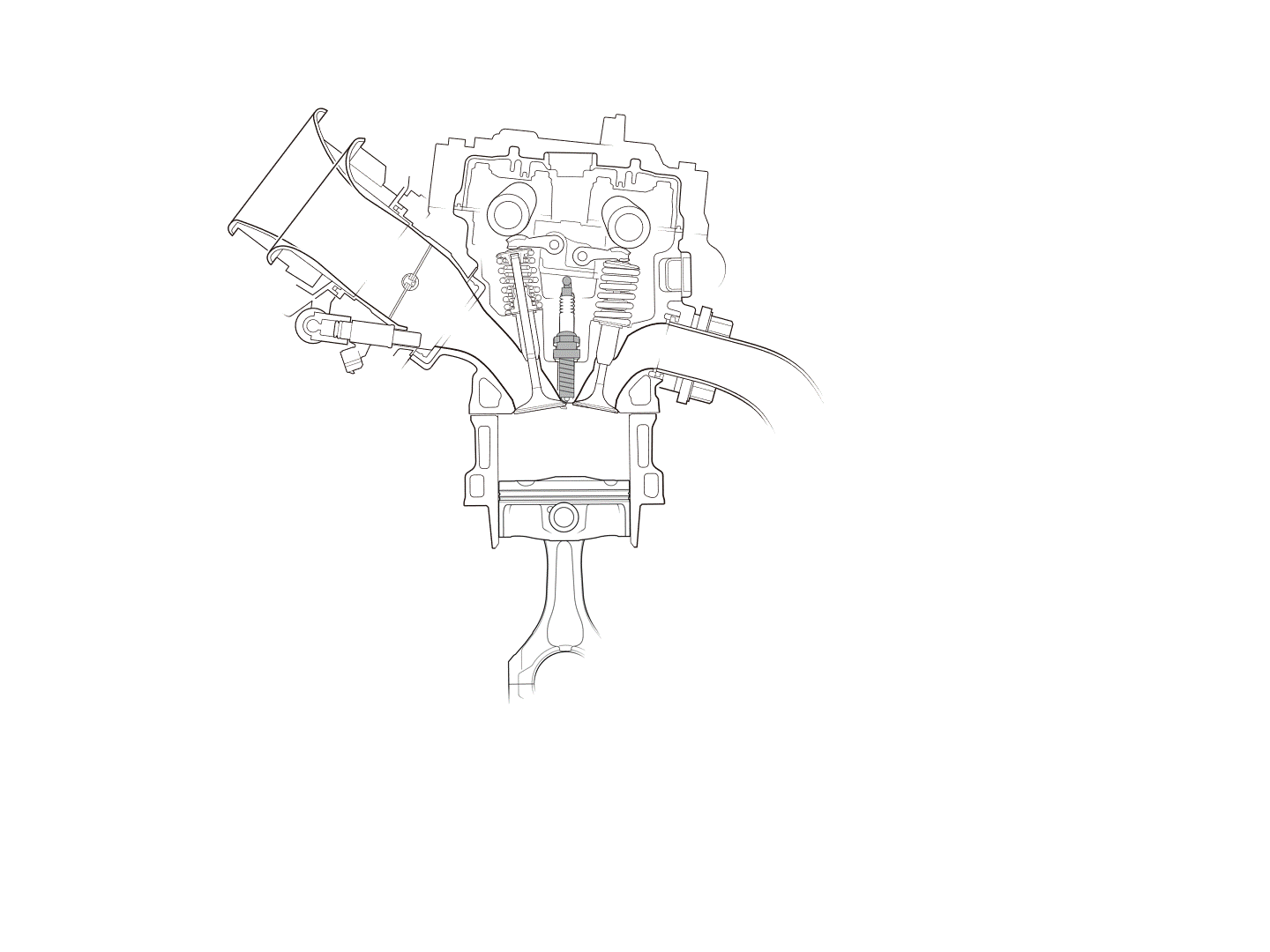Do you know the role that spark plugs play in your bike,
and if you need to replace them?
Hello, everyone!
This article will take a look at the topic of periodically inspecting your spark plugs.
Spark plugs are essential parts for stable combustion of the air-fuel mixture in the engine.
Failure to inspect and replace your spark plugs can cause a number of malfunctions, including with the engine.
In this article, we will learn about the role of spark plugs and proper inspection methods!
1.The Role of Spark Plugs
Spark plugs are devices used to ignite the air-fuel mixture in the engine.
Electricity is applied to the spark plugs, which send out sparks that ignite combustion in the air-fuel mixture within your engine. This puts the pistons in motion, and generates power.
Spark plugs are subjected to over 20,000 volts of electricity, and their igniting portion is subjected to constant pressure from combustion.

When electricity flows to a spark plug, sparks fly from the electrodes at the tip of the spark plug, igniting the air-fuel mixture.

Like other parts, spark plugs also have a life span, and as the central electrode wears into a round shape, it can no longer offer stable ignition. Failure to achieve stable ignition can result in reduced engine power, poorer fuel efficiency, and shortened engine life.

2.Inspecting and Replacing Spark Plugs
Each model will have a different inspection and replacement timing, so please check your owner's manual for your motorcycle. Owner's manuals for the various models can also be found at Motopub.
In this section, we will talk about spark plug inspection.

2-1.When to Inspect and Replace Your Spark Plugs
Spark plug inspection and replacement timing is listed in the maintenance schedule.
The following example recommends alternating regular inspection and replacement.
The following section will provide a look at how to inspect your spark plugs. We hope you will give it a try!
The difficulty of replacing spark plugs varies greatly from model to model.
For your safety, please do so within the limits of your own knowledge and capabilities.
For any areas that may seem challenging, please consult your local Honda dealer.

2-2.How to Replace a Spark Plug
・Remove the spark plug and visually inspect the electrodes and insulator.
・Inspect the electrodes for burning, dirt, or damage, and inspect the insulator section for damage.
・Use a nylon brush or plug cleaner to remove deposits from the electrodes.
・If the insulator is dirty, clean it with an appropriate material, such as a plug cleaner or a parts cleaner. In doing so, please ensure that no metallic material (such as metal powder) adheres to the surface. If it does, the insulator loses its insulating function, and can prevent the proper function of the spark plug.

2-3.Measuring the Gap Between the Central Electrode and the Ground Electrode
・Use a plug gap gauge or similar tool to ensure that the gap is appropriate. Check the owner's manual for the appropriate gap value.
・If the gap is not within the appropriate value, adjustment may be necessary. Please consult your local Honda dealer.
(For spark plugs with a thin central electrode, such as platinum or iridium plugs, these electrodes can be easily damaged. Therefore, do not adjust the gap yourself, but replace the plug with a new one.)
・If the central electrode has rounded corners or the ground electrode is unevenly worn down, replace the plug with a new one.

3.Summary
In this article, we took a look at the role of spark plugs and how to inspect them.
Even though it may be easier to forget replacement versus engine oil, it is still a consumable, so don't forget to inspect and replace your spark plugs on a regular basis.
Note that methods described in this article are only for some models and will vary from model to model. Please refer to the owner's manual for your bike for details on how to take on maintaining your actual vehicle.
We hope you will stay aware of inspecting your bike on a daily basis to have a more comfortable motorcycle life!
